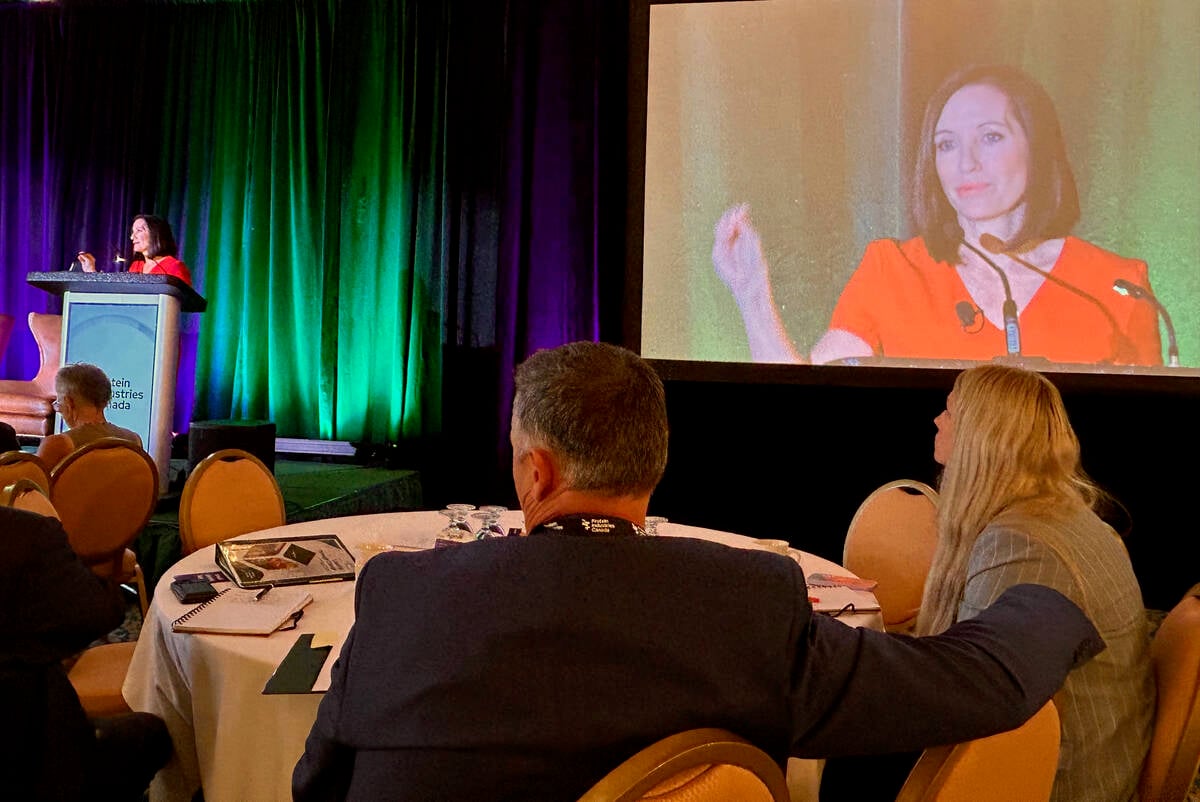The Canadian Swine Health Board is running out of time and money.
It has developed a national biosafety system, funded pioneering research in pig diseases, is organizing emergency response plans for future disease outbreaks and has brought together a wide range of hog industry players, but it has never had more than temporary funding.
Federal government money for the board, which began operating in 2009, runs out in March and there are no promises of future funding.
“Many of you have been asking about next year’s forum,” chair Florian Possberg said during the organization’s annual forum, held in Winnipeg October 17-18.
Read Also

Canada told trade crisis solutions in its hands
Canadians and Canadian exporters need to accept that the old rules of trade are over, and open access to the U.S. market may also be over, says the chief financial correspondent for CTV News.
“Everybody in the room will play a role in whether that happens or not.”
The financial wall the board is hurtling toward is the result of the temporary nature of the government funding it has relied on, which makes up 100 percent of the budget. That money disappears March 31.
Possberg is suggesting farmers and other industry players agree to a one-penny per pig contribution to the board to keep it operating. That’s a tiny amount of money, but Possberg acknowledged that in times of $20 to $50 per pig losses, even that little amount might be hard to accept.
He said it is essential to maintain the organization’s disease research, control and suppression work.
“We need to be able to continue on these initiatives,” he said. “We need to continue to recognize the importance of health programming.”
The board has given the hog industry the most co-ordinated disease control program of any Canadian livestock industry, and most producers say it is a valuable contribution to their bottom lines. A survey by Ernst and Young found 70 percent of farmers think the board improves their profitability. The per pig value is about $13 to $16 per animal exported.
“CSHB has helped elevate the core swine health priorities, filling the gaps fragmented disease management programming has created,” said Ernst and Young adviser Shazmin Dosani, who oversaw an analysis and survey of the board.
“Should CSHB activities and programming be discontinued, interviewees suggest that stakeholders would suffer losses in the area of consumer confidence, emergency preparedness and the dissolution of informational and social networks.”
The board’s original federal funding arose from efforts made to control circovirus, which ravaged the Canadian herd in 2004 and 2005. Money was set aside to develop an organization that would proactively prepare for the outbreaks of unknown diseases and unexpected re-emergences of known diseases.
Much work has been done but much remains, said University of Prince Edward Island veterinary specialist Dan Hurnick. Preventive medicine is difficult work.
“We’re trying to define emerging emergencies. We have no idea what they’re going to be,” said Hurnick.
“What we do know is that new diseases will happen. What we don’t know for sure is what they’ll be and when they will be and how they will happen.”
Federal money was easier to get when the board was first funded. However, money has become tighter since 2009.
“We’re in different budgeting times,” said Possberg. “It’s a lot different in Ottawa today.”
This year’s forum was attended by 170 people, well above the previous average of 130 to 140. Possberg urged them to go back to their parts of the hog industry and rally them to support the continuation of board funding
“We have to take matters into our own hands and show some leadership here,” said Possberg.
Executive director Robert Harding said it would be tragic to lose the focus that the board has been able to bring to disease preparedness and control. When circovirus broke out, the industry discovered that no government department or agency or section of the industry was willing to step forward and co-ordinate a national response.
“That was the reality, and it wasn’t good,” said Harding.















